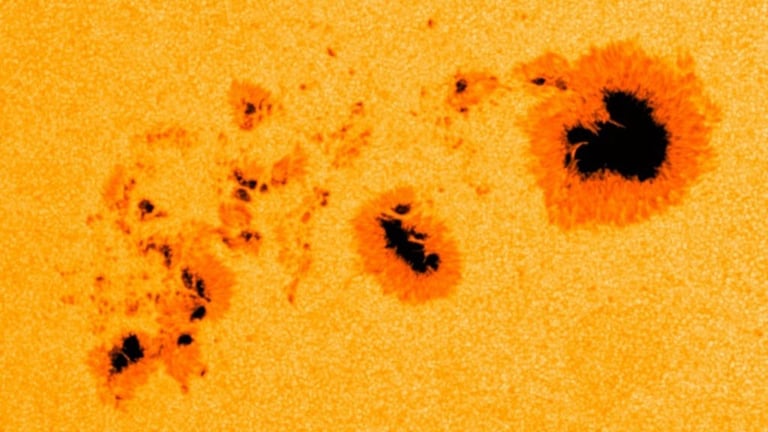Breakthrough Solar Technique Solves 400-Year-Old Sunspot Mystery, Boosts Solar Storm Predictions
July 16, 2025
Researchers have achieved a breakthrough in solar observation by enhancing a technique from the Max Planck Institute for Solar System Research, allowing for clearer, satellite-quality measurements of the Sun's magnetic field using the German GREGOR solar telescope, which now effectively eliminates atmospheric blurring.
This refined technique enabled scientists to measure magnetic forces within sunspots with unprecedented precision, providing new insights into their stability.
The study revealed that magnetic forces in sunspots are perfectly balanced by pressure forces, explaining their long-standing stability on the Sun's turbulent surface.
This discovery, published in Astronomy & Astrophysics, solves a 400-year-old mystery about the stability of sunspots that has puzzled scientists since Galileo's time.
Sunspot activity follows an 11-year cycle, with peaks that often lead to solar storms capable of disrupting satellite communications and power grids on Earth.
Understanding sunspot cycles is crucial, as they influence solar phenomena like coronal mass ejections and solar flares, which pose risks to technology and astronauts.
The findings hold significant practical potential, improving the prediction of solar storms and helping to protect satellites, power infrastructure, and space missions from harmful solar radiation.
Led by Germany's Institute of Solar Physics, the research team developed a new analytical method to understand the forces maintaining sunspot stability, marking a major advancement in solar physics.
Sunspots are dark patches caused by strong magnetic fields that make these regions cooler than their surroundings, yet they can sometimes shine brighter than the full Moon when isolated.
While previous theories suggested a balance between gas pressure and magnetic forces maintains sunspot stability, confirming this was difficult due to atmospheric interference, which the new technique overcomes.
This breakthrough enhances our ability to predict solar activity, which is vital for safeguarding satellites, power grids, and astronauts from solar radiation.
The precise measurements were achieved by analyzing polarized light within sunspots, revealing a perfect equilibrium between magnetic and pressure forces that explains their stability.
Summary based on 2 sources
Get a daily email with more Science stories
Sources

ScienceAlert • Jul 16, 2025
A 400-Year-Old Mystery About The Sun May Finally Be Solved
Universe Today
Scientists Solve 400 Year Old Solar Mystery